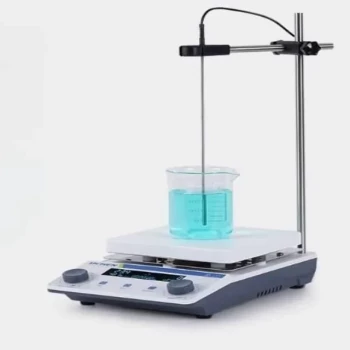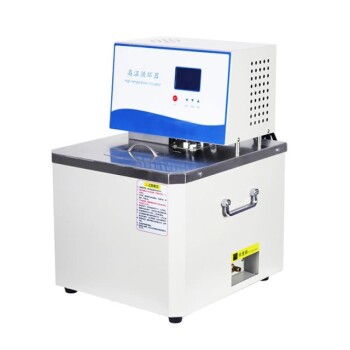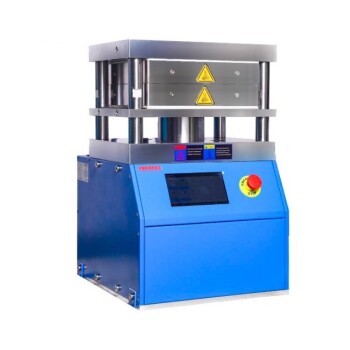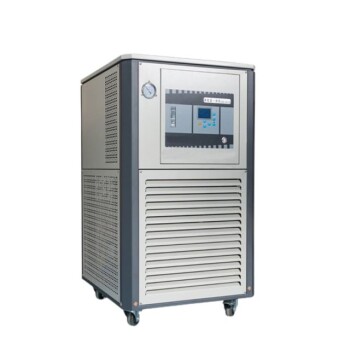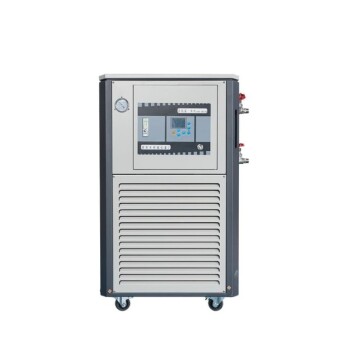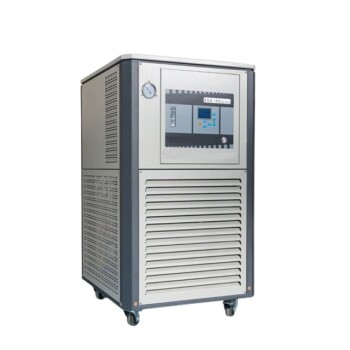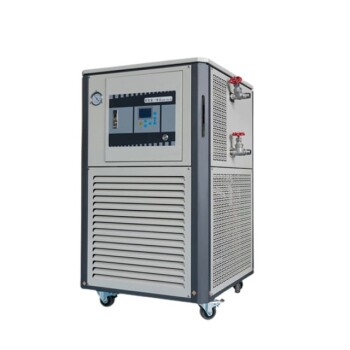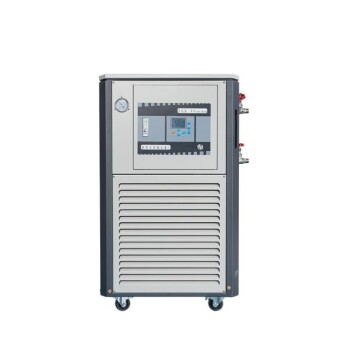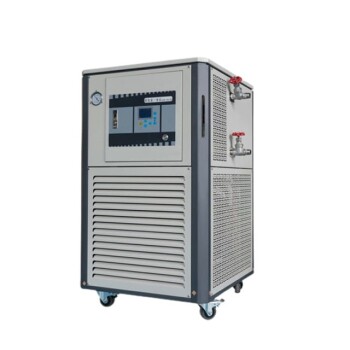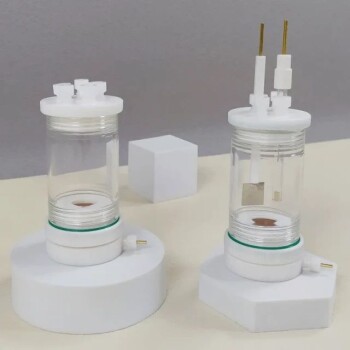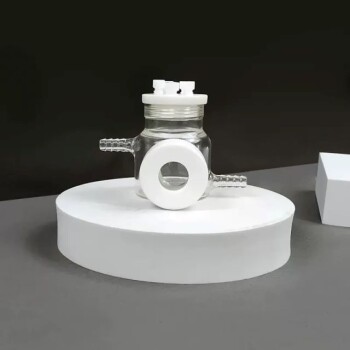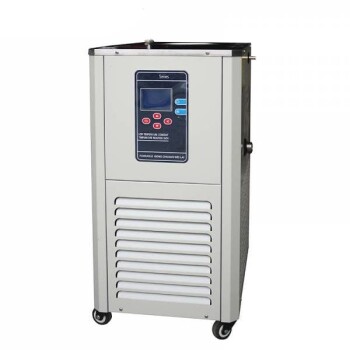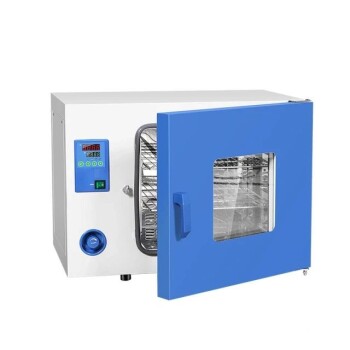Overview of Heating Methods
Importance of Correct Heating Method
The experiment wouldn't do the trick, and it turned out to be a problem with the way I was heating it! Is there anyone who still thinks, "I do an experiment, as long as the samples are added, the working solution is added, and then stuffed into the thermostat to let the sample react on its own, and we quietly wait for the results will be fine?" No, no, no, there is a crucial detail you have overlooked—the choice of heating method.
Choosing the right heating method is not just about convenience; it's about ensuring the accuracy and reliability of your results. Each heating method—whether it's a metal bath, water bath, or thermostat heating—has its own unique characteristics and applications. For instance, a metal bath is ideal for precise temperature control and sensitive enzymatic reactions, while a water bath is more suitable for temperature-sensitive experiments that don't require extreme temperatures. Thermostat heating, on the other hand, is perfect for longer incubation times, such as ELISA or bacterial culture experiments.
| Heating Method | Ideal Applications | Key Characteristics |
|---|---|---|
| Metal Bath | Precise temperature control, sensitive enzymatic reactions, PCR reactions | Fast, accurate, controllable |
| Water Bath | Temperature-sensitive enzyme reactions, general laboratory use | Economical, large volume capacity |
| Thermostat | Longer incubation times, ELISA, bacterial culture | Multi-purpose, cost-effective |
Overlooking this crucial detail can lead to skewed results, wasted time, and compromised experiments. So, before you start your next experiment, take a moment to consider which heating method aligns best with your specific needs. Your results—and your reputation as a scientist—depend on it.
Common Heating Methods
In the laboratory, three primary heating methods are commonly employed: metal baths, water baths, and thermostat heating. Each method has its unique applications and advantages, tailored to specific types of experiments.
-
Metal Baths: Ideal for precise temperature control, metal baths are often used in sensitive enzymatic reactions, PCR setups, and protein denaturation processes. These baths offer fast, accurate, and controllable heating, making them suitable for small and micro-sample constant temperature experiments.
-
Water Baths: Commonly used for temperature-sensitive enzyme reactions, such as BCA and triglyceride assays, water baths provide a more economical option. They can accommodate larger volumes of reaction vessels and are particularly favored in academic laboratories due to their affordability.
-
Thermostat Heating: Best suited for longer incubation or cultivation times, thermostat heating is versatile and can handle multiple samples simultaneously. This method is often used in ELISA, immunofluorescence staining, and bacterial culture experiments, where maintaining consistent environmental conditions is crucial.
Understanding these differences is essential for selecting the appropriate heating method to ensure the accuracy and reliability of your experimental results.
Metal Bath Heating
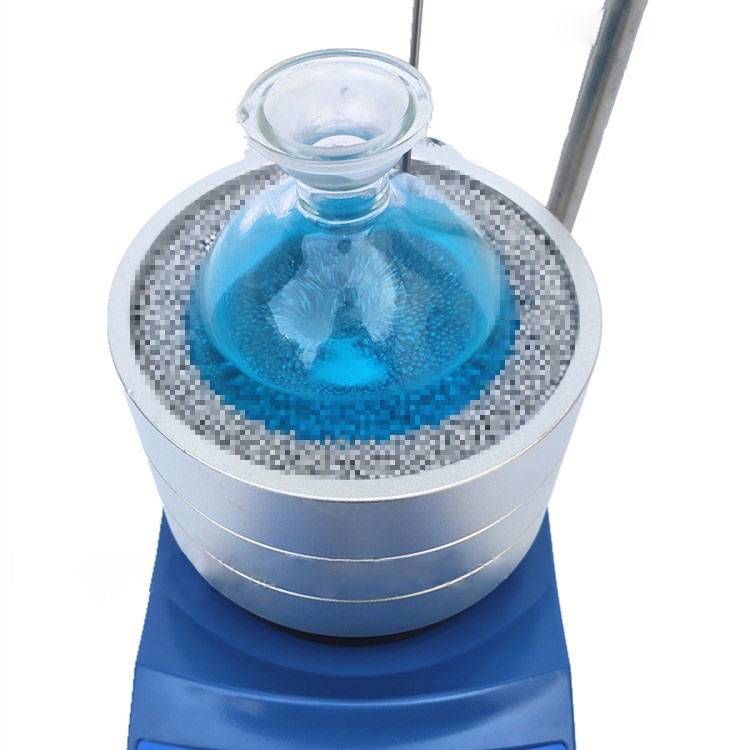
Description and Application
A thermostatic metal bath, crafted from semiconductor materials, employs electrical heating to maintain a constant temperature. This method is renowned for its speed, precision, and controllability, making it ideal for small and micro-sample constant temperature experiments. The metal bath excels in scenarios requiring rapid heating or cooling, such as the preservation of sensitive samples, the stabilization and reaction of various enzymes, and the manipulation of nucleic acids and proteins.
Key Applications:
- Enzyme Preservation and Reaction: The metal bath provides an optimal environment for maintaining enzyme activity and facilitating enzymatic reactions.
- PCR Reaction: Its precise temperature control is crucial for the polymerase chain reaction, ensuring accurate replication of DNA.
- Electrophoresis Pre-Denaturation: Before electrophoresis, the metal bath can pre-denature samples, preparing them for accurate separation.
- Serum Coagulation: It supports precise temperature control necessary for serum coagulation experiments.
- Protein Denaturation: The metal bath can induce protein denaturation, aiding in structural studies and functional assays.
This versatile tool is not only efficient but also a preferred choice for laboratories requiring high precision in temperature-sensitive experiments.
Advantages and Disadvantages
Disadvantages
- Operational Caution Required: The metal bath demands meticulous handling to prevent any mishaps, ensuring that the delicate semiconductor material is not compromised. This level of care is essential to maintain the precision and reliability of the heating process.
- Cost Implications: The initial investment for a metal bath is substantial, making it less accessible for budget-constrained laboratories. However, this expense is offset by the long-term benefits of accurate and efficient heating, which can significantly reduce experimental errors and rework.
Advantages
- Financial Feasibility for Well-Endowed Labs: For laboratories with robust financial backing, the metal bath is a worthwhile investment. Its high precision and rapid heating capabilities make it indispensable for experiments requiring stringent temperature control, such as PCR reactions and protein denaturation.
- Enhanced Experimentation: The metal bath's ability to provide fast, accurate, and controllable heating makes it a superior choice for small and micro-sample constant temperature experiments. This ensures that the experimental outcomes are reliable and reproducible, aligning with the high standards of scientific research.
By understanding these advantages and disadvantages, laboratories can make informed decisions about whether the metal bath aligns with their specific needs and financial capabilities.
Water Bath Heating
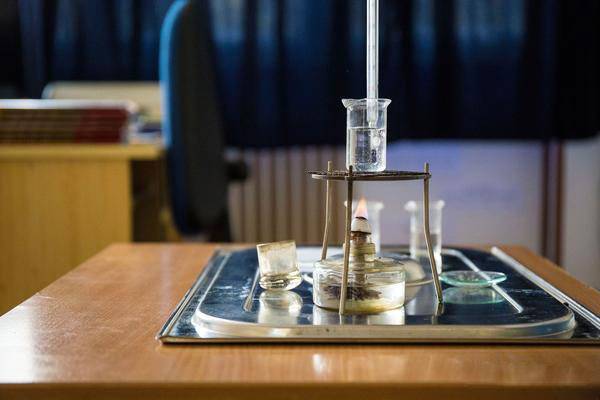
Description and Application
A constant temperature water bath utilizes water as its medium, employing electric heating to achieve a desired constant temperature. This apparatus is versatile, capable of facilitating a range of laboratory operations such as distillation, drying, concentration, and warming stains. Notably, it excels in supporting sensitive enzymatic reactions, making it indispensable for biochemical experiments. The water bath's maximum heating temperature is capped at 100 °C, which, while narrower than the range offered by metal baths, does not hinder its utility in accommodating large volumes of reaction vessels. Moreover, its economical price point makes it an ideal choice for university laboratories.
Key Applications:
- Distillation and Drying: Essential for purifying and dehydrating chemical compounds.
- Concentration and Staining: Crucial for enhancing the visibility of biological samples.
- Enzymatic Reactions: Ideal for experiments requiring precise temperature control, such as BCA and triglyceride assays.
Comparative Analysis:
| Feature | Water Bath | Metal Bath |
|---|---|---|
| Heating Range | Up to 100 °C | Wider range (can exceed 100 °C) |
| Volume Capacity | Large | Small to medium |
| Cost | Economical | Expensive |
| Suitable Experiments | General lab operations, enzymatic reactions | Precise temperature control, PCR, protein denaturation |
In summary, while the water bath may not match the metal bath in terms of heating range, its broad applicability and affordability make it a staple in many laboratory settings.
Advantages and Disadvantages
Disadvantages:
-
High Temperature Requirement: The need for high temperature conditions (95℃ and above) makes it unsuitable for water bath heating. This is because such temperatures are dangerously close to the boiling point of water, which can lead to uneven heating and potential boiling over.
-
Maintenance Needs: Regular maintenance is essential to ensure the longevity and efficiency of the water bath. This includes periodic cleaning and calibration to prevent issues like scale buildup or malfunctioning thermostats.
-
Risk of Contamination: The risk of sample contamination is a significant concern, especially in shared laboratory environments. Contaminants can easily enter the water bath, affecting the integrity of the samples being heated.
Advantages:
-
Economical and Versatile: Despite its drawbacks, the water bath remains a popular choice due to its economical price and versatility. It can accommodate a large volume of reaction vessels, making it suitable for various laboratory operations such as distillation, drying, and concentration.
-
Sensitive Enzymatic Reactions: The water bath excels in handling temperature-sensitive enzymatic reactions, such as those involving BCA or triglycerides. Its ability to maintain a stable temperature within a narrow range makes it ideal for these delicate processes.
-
Large Volume Capacity: Unlike some other heating methods, the water bath can handle large volumes of liquid, which is particularly useful for experiments requiring significant quantities of reactants.
| Aspect | Water Bath Heating |
|---|---|
| Temperature Range | 95℃ and above (not ideal for water bath) |
| Maintenance | Requires regular cleaning and calibration |
| Contamination Risk | High risk of sample contamination |
| Cost | Economical |
| Versatility | Suitable for large volume reactions, distillation, drying, concentration |
| Enzymatic Reactions | Ideal for temperature-sensitive enzymatic reactions |
This table summarizes the key advantages and disadvantages of water bath heating, highlighting its suitability for specific laboratory applications despite its limitations.
Thermostat Heating
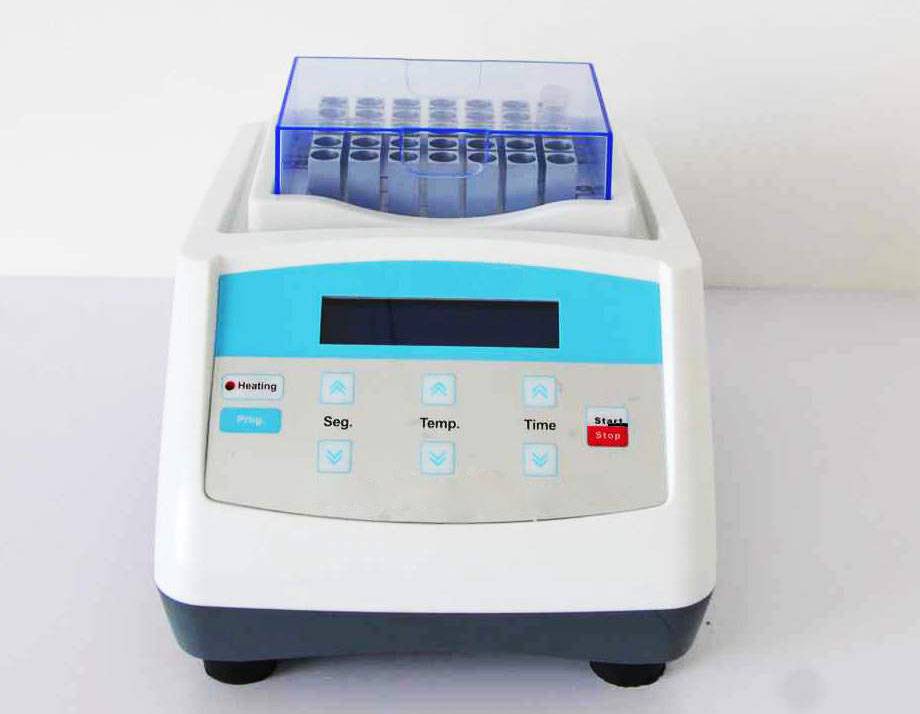
Description and Application
Constant temperature box heating utilizes air as the medium to maintain a stable internal environment. When connected to a power supply, the air outlet releases hot air, effectively controlling the humidity, temperature, and other parameters within the chamber. This versatile device can accommodate multiple samples simultaneously, making it ideal for extended incubation periods of 1 hour or more, such as ELISA incubations for primary or secondary antibodies. Additionally, it is widely applicable in biology and microbiology experiments, including the cultivation of bacteria, fungi, and cells.
Key Applications:
- ELISA Incubation: Suitable for both primary and secondary antibody incubations, ensuring consistent temperature and humidity levels.
- Microbiology Cultures: Supports the growth of various microorganisms, including bacteria, fungi, and cells, under controlled conditions.
- Long-Term Experiments: Ideal for experiments requiring prolonged incubation times, ensuring stability over extended periods.
Versatility and Cost-Effectiveness:
The constant temperature box serves multiple purposes, making it a cost-effective solution for routine laboratory applications. Its ability to handle diverse experimental needs while maintaining consistent environmental conditions underscores its value in various research settings.
Advantages and Disadvantages
Disadvantages of Thermostat Heating
One of the primary challenges with thermostat heating is maintaining uniform temperature distribution within the box. This is particularly problematic because the temperature near the air outlet tends to be higher, while areas further away from the outlet experience lower temperatures. This uneven temperature distribution can lead to inconsistent experimental results, especially for sensitive reactions that require precise temperature control.
Moreover, the efficiency of thermostat heating is significantly affected by frequent door openings. Each time the door is opened, a substantial amount of heat is lost, causing the internal temperature to drop. This necessitates a prolonged period for the temperature to recover and stabilize, which can slow down the overall process. Consequently, experiments that require frequent access to the interior of the thermostat box may suffer from extended incubation times and potential temperature fluctuations, affecting the accuracy and reliability of the results.
Comparison and Conclusion
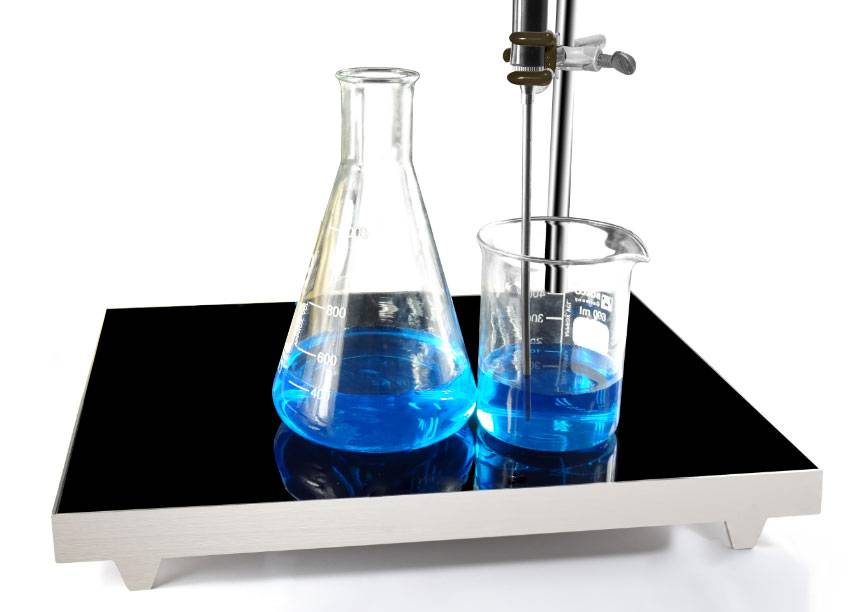
Differences in Heating Methods
When comparing water bath heating and incubator heating, it becomes evident that even minor differences in heating methods can significantly impact experimental outcomes, especially when enzymes are involved. For instance, examining the standard curve graph of the Prilosec Triglyceride Kit (E1013) reveals stark contrasts between the results obtained from water bath heating and thermostat heating.
Both methods operate under controlled variables, identical environmental conditions, and utilize the same working fluid and samples. However, the subtle variance in heating techniques leads to notably different standard curves. This discrepancy underscores the critical importance of selecting the appropriate heating method for specific experiments, particularly those involving enzymes, to ensure accuracy and reliability in results.
To illustrate this point further, consider the following table comparing the key characteristics of water bath and incubator heating:
| Feature | Water Bath Heating | Incubator Heating |
|---|---|---|
| Medium | Water | Air |
| Temperature Control | Excellent for temperatures up to 100°C | Variable, with potential hot and cold spots |
| Volume Capacity | Suitable for large reaction vessels | Can accommodate multiple samples |
| Suitability | Ideal for temperature-sensitive enzyme reactions | Best for longer incubation times |
| Maintenance | Requires regular upkeep | Generally lower maintenance |
| Contamination Risk | Higher risk of sample contamination | Lower risk, but temperature uniformity can be an issue |
This comparison highlights that while both methods have their merits, the choice between them should be guided by the specific requirements of the experiment, particularly concerning temperature sensitivity and sample volume. Ensuring that the heating method aligns with these needs is essential for obtaining precise and reproducible results.
Summary of Suitable Applications
To summarize, each heating method has its unique applications tailored to specific experimental needs.
-
Metal Bath: Ideal for precise temperature control, often exceeding 100℃, making it suitable for sensitive enzymatic reactions, PCR reactions, and protein denaturation. Its rapid and accurate temperature regulation is particularly beneficial for small and micro-sample experiments.
-
Water Bath: Best suited for temperature-sensitive enzyme reaction experiments, such as BCA and triglyceride assays, where the temperature should not exceed 100℃. Its economical nature and ability to accommodate larger volumes make it a popular choice for general laboratory use.
-
Thermostat: Perfect for longer incubation or cultivation times, including ELISA, immunofluorescence staining, and bacterial culture. Its spacious interior allows for multiple samples to react simultaneously, making it cost-effective for routine laboratory tasks.
| Heating Method | Suitable Applications | Temperature Range |
|---|---|---|
| Metal Bath | Enzymatic reactions, PCR, protein denaturation | >100℃ |
| Water Bath | BCA, triglyceride assays | ≤100℃ |
| Thermostat | ELISA, immunofluorescence, bacterial culture | Variable, longer incubation times |
Each method offers distinct advantages, ensuring that laboratories can choose the most appropriate heating method based on their specific experimental requirements.
Related Products
- Laboratory Small Constant Temperature Heated Magnetic Stirrer Heater and Stirrer
- High Temperature Constant Temperature Heating Circulator Water Bath Chiller Circulator for Reaction Bath
- Vertical Laboratory Quartz Tube Furnace Tubular Furnace
- Infrared Heating Quantitative Flat Plate Press Mold
- Double Plate Heating Press Mold for Lab

